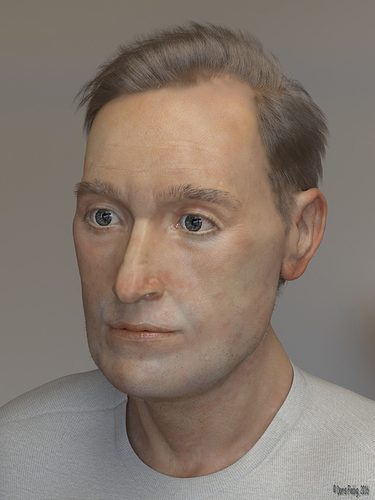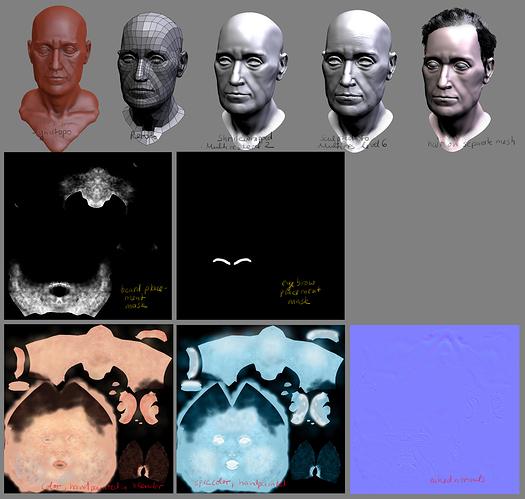thank you harleynut. it is good to be back 
craig, thank you for the stars. and i am glad the breakdown is appreciated.
paolo, yes with the strength of the normal map we can choose how good the detail shows. in this case, making the normal map stronger to show the skin folds better also increased the skin pores and made the unrealistically pronounced. in my next project, i will separate them, into different maps for more control…
as to your question, why retopo etc. for me it has several reasons. if i would work with the dynatopo sculpt alone, and sculpt into that the fine detail like the pores etc, then i have a very dense mesh (at least on the face). now when i want texture it, i could use vertex paint. but this is terribly slow on such dense meshes. not good. so, i would need an uv map to be able to apint the texture. creating a uv map directly from a dynatopo is a nightmare too, because of the high polycount. and i like to have the uv layout so that i can see where the pieces go on the sculpt, so an aoutomatic uv will not work… and the last reason is performance. when you paint a texture on a highpolysculpt, it is slow too. painting it on a low level multires is super fluid… and, finally, when i test the shaders, i need rendering in the viewport, and that is not so smooth when i have to render a highpoly dynatopo… so, i retopo, multires shrinkwrap two levels. this gives me a very light basemesh, which is easy to make nice uvs. and when you compare the multires two level with the dynatopo, you see it is already much cleaner, even though it is just shrinkwrapped. now, when i subdivide and sculpt further, i have the advantage of good flowing edges. meaning for example the edge loops run along the border of the lids, the border of the lips, along the bigger folds etc. this makes sculpting these ares clean and with correct detail easy. sculpting along bad flowing edgeloops is harder, and needs more polygons… so, the time needed to retopo, is easily saved in the later stages of the work…
mr chuan, thank you. your constructive critique is very helpful. yes, thirt seams are too far forward, i did not notice that, but you are right. same with eyes. i struggled a lot with them and am doing already different ones in my new project… whoops, i overlooked the blotches at the hairline, should not be there, you are right… as to the neck, i think, i have it excately as the person i used for reference, and it looks only so odd in this particular camara angle. i just tried it, when i rotate the camera just a tad it looks natural. so bad camera angle, should have seen that… here is a side view to show you why it looks ood, namely sinse he has a strong bend from back of head down to neck… the image also shows that the tsihirt seam is too far forward… thanks a lot for helping by pointing out trouble spots.


 Thank you so much for sharing your texture breakdown
Thank you so much for sharing your texture breakdown
 But be care with the forehead. It is showing the trick of the CGI images (some strange patterns)
But be care with the forehead. It is showing the trick of the CGI images (some strange patterns)
